by Brooks Riley
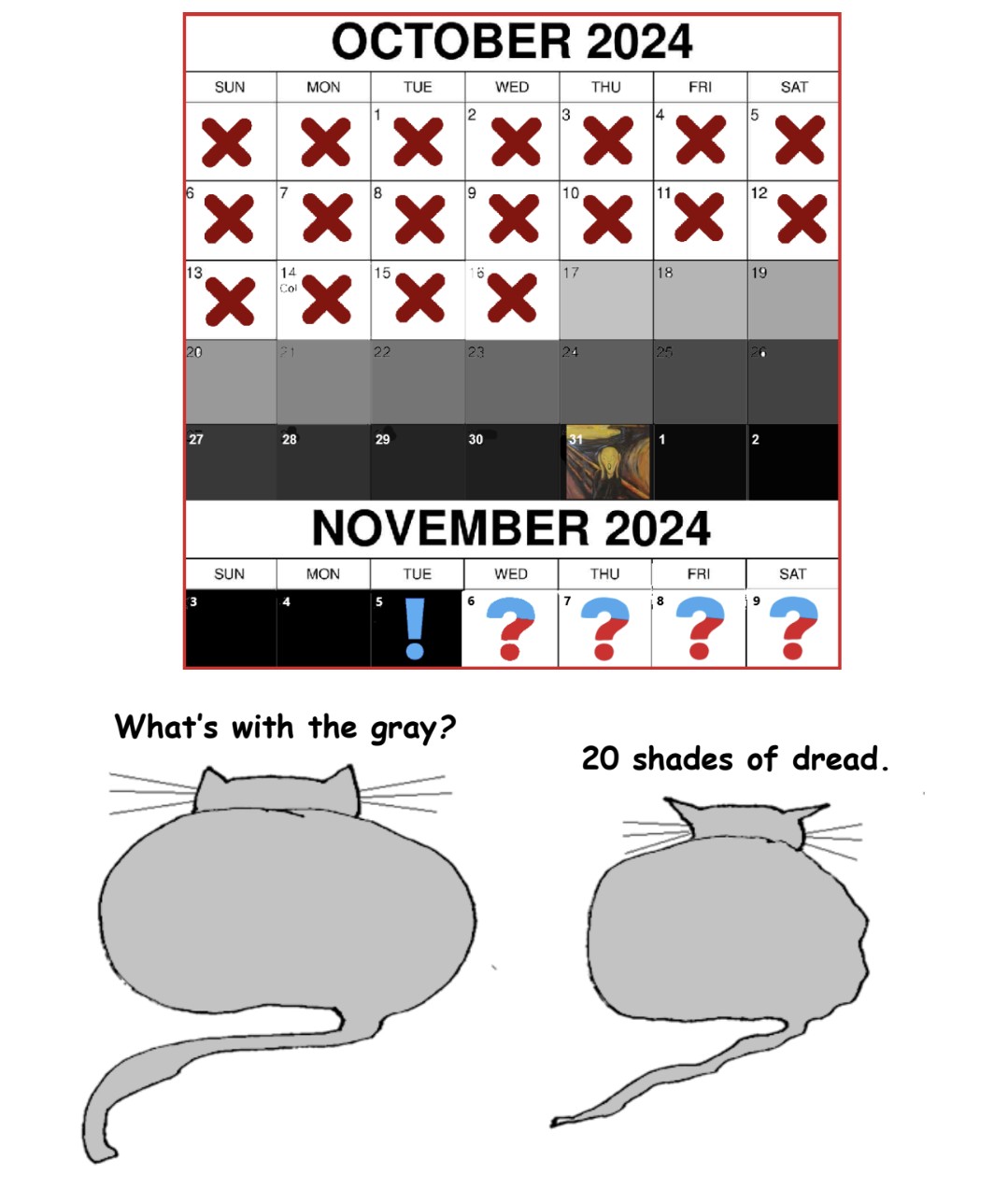
Enjoying the content on 3QD? Help keep us going by donating now.
by Barry Goldman

The New York Times had a piece recently about a clever hustle called station flipping. It involves Citi Bikes, the blue rental bikes you see all over New York City. It seems the natural movement of people and bikes around the city results in periodic imbalances. Sometimes there are too many bikes in a docking station, other times there are too few. So Lyft, the company that owns Citi Bike, implemented a program that rewarded people for moving bikes from one station to another to correct those imbalances. The miracle of modern information technology enabled the company to track the location of its bikes with precision and to tweak the reward structure in real time. The system awarded points, and the points could be redeemed for cash. Moving a bike from a full docking station to an empty one could earn a “Bike Angel” up to $4.80.
People respond to incentives. They also, in every system everywhere, “work the points.” As a direct and inevitable result, people figured out how to game the Bike Angel system. They realized they didn’t have to wait for the natural movement of bikes and people to create shortages and surpluses, they could manufacture them.
The algorithm updated every 15 minutes. Some docking stations are only a block apart. That means a group of aerobically fit Angels can empty one docking station and fill another by riding bikes to the empty station and running back to the full station until the conditions are reversed. If they can do this before the system updates, they can earn the maximum for each ride. Then, when the full station is empty and the empty station is full, they can reverse the process and do it again. Before too long some enterprising Bike Angels were earning up to $6,000 a month.
The company, predictably, was not amused. It says station flipping distorts the market and games the system. That’s pretty rich coming from Lyft, since its whole business model depends on gaming the system and distorting the market by fudging the distinction between employees and independent contractors. But that’s a different article. In this article I want to point out how station flipping maps the essential features of our financial sector. Read more »
by Claire Chambers
 In her provocative, genre-defying book, Funeral Diva (2020), Pamela Sneed declares her intention to write ‘a story about being trapped in a story’. This is Sneed’s metafictional idea that main storylines can fail to capture the full reality. To counter dominant narratives, the author creates a turbulent churn of memoir, poetry, essays, criticism, and commentary about marginalized identities. She includes a prose poem entitled ‘A New Story’ which closes with the hopeful resolution: ‘I am going to write a new story’. Funeral Diva seems to belong to an entirely fresh genre, making readers wonder whether there are other ways to tell stories that haven’t yet been thought of.
In her provocative, genre-defying book, Funeral Diva (2020), Pamela Sneed declares her intention to write ‘a story about being trapped in a story’. This is Sneed’s metafictional idea that main storylines can fail to capture the full reality. To counter dominant narratives, the author creates a turbulent churn of memoir, poetry, essays, criticism, and commentary about marginalized identities. She includes a prose poem entitled ‘A New Story’ which closes with the hopeful resolution: ‘I am going to write a new story’. Funeral Diva seems to belong to an entirely fresh genre, making readers wonder whether there are other ways to tell stories that haven’t yet been thought of.
To push back against received ideas regarding gay liberation and the AIDS crisis, Sneed highlights whose voices are often left out. She brings together the personal and political, recent history and the contemporary, to explore HIV/AIDS, health inequalities, racial injustice, and the broader struggles of being African American in the late twentieth and early twenty-first centuries. At the heart of Sneed’s narrative is a critical examination of stories – who tells them, how they are told, and the power relations that shape them.
Funeral Diva wasn’t released until late 2020, emerging out of at least ‘fifteen years’ of quiet germination. The volume’s completion was tied to trips Sneed made to Ghana and South Africa, which proved pivotal to her thinking. Also ‘pushing [her] across the finish line’ was the resurfacing of trauma during the Covid-19 pandemic, which echoed the devastation of the AIDS crisis. Read more »
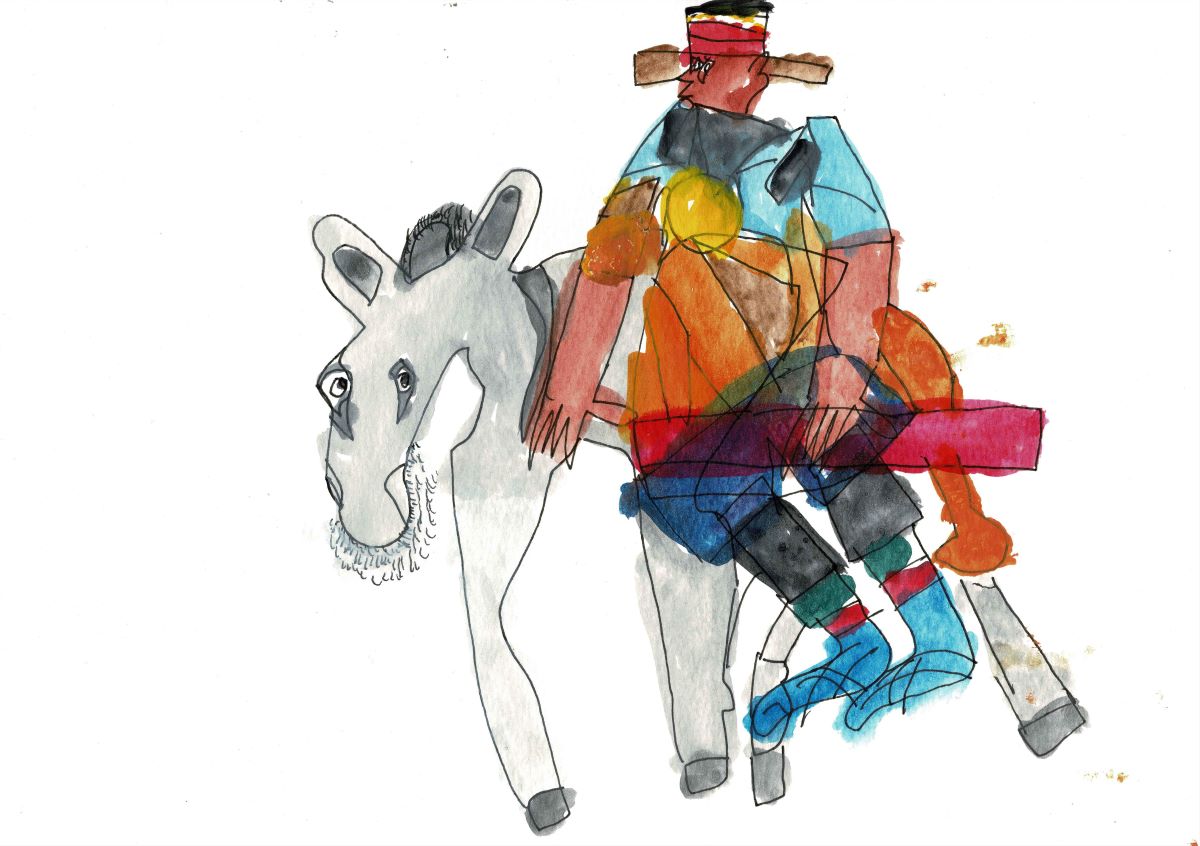
Conway Ginger. Donkey and Man, Standing and Walking. 2023.
Acrylic paint and ink.
Enjoying the content on 3QD? Help keep us going by donating now.
by Malcolm Murray
 There is a strawman factory smack in the middle of the AI risk debate. Given the complexity of AI risk, we are seeing a lot of weak arguments, focusing only on one aspect of AI risk or AI risk management. In fact, AI risk has become a bit of a “strawman factory”, since it is so complex that it is very easy to only zero in on one aspect and knock that down, while neglecting the rest.
There is a strawman factory smack in the middle of the AI risk debate. Given the complexity of AI risk, we are seeing a lot of weak arguments, focusing only on one aspect of AI risk or AI risk management. In fact, AI risk has become a bit of a “strawman factory”, since it is so complex that it is very easy to only zero in on one aspect and knock that down, while neglecting the rest.
The debate over the California AI bill SB-1047 showed how easily these strawmen take over. Andreessen Horowitz was particularly effective at churning out strawmen, such as the idea that the benefits of AI are so great (correct) so that we have a moral reason to ignore the risks (incorrect).
In order to fend off all these strawmen walking around, we can make use of three underappreciated aspects of AI risk and risk management – “the Spectrum”, “the System” and “the Stack”. Let me explain what I mean by those.
The “Spectrum”
Given the complexity of AI risk, it is easy to zero in on one aspect and point out that an AI risk assessment technique would not work there. But this neglects the wide spectrum of AI risks.
The risks to society from AI fall along a wide spectrum and people tend to underestimate how wide it is. The spectrum can be visualized in terms of levels of velocity and uncertainty, i.e. how long it will take a risk to materialize and how uncertain we are about its effects. On one hand, we have risks for which we have high certainty and that are already here, such as bias and discrimination. We know that by default, since AI has been trained on the sum total of human knowledge, and that human knowledge is inherently biased, that the AI models have biased data in their training set.
On the other hand, we have risks such as loss of control risks. Read more »
by Thomas R. Wells
 Drug overdose deaths have more than doubled in America in the past 10 years, mainly due to the appearance of Fentanyl and other synthetic opioids. These drugs combine incredible ease of manufacture with potency in tiny amounts and dangerousness (the tiniest miscalculation in dosage makes them deadly).
Drug overdose deaths have more than doubled in America in the past 10 years, mainly due to the appearance of Fentanyl and other synthetic opioids. These drugs combine incredible ease of manufacture with potency in tiny amounts and dangerousness (the tiniest miscalculation in dosage makes them deadly).
This continues a general and no longer surprising trend. The global war on drugs has produced a strong selection effect for drugs which are easy to manufacture and smuggle but at the cost of being much more dangerous for consumers. There is no reason to expect this trend to alter. Moreover, Fentanyl leaks – it appears as an additive in all sorts of other illegally bought drugs, like Xanax, surprising and killing consumers who had no idea what they were getting.
The best thing we can do about this – and hence the right thing to do – is to legalise all hard drugs so that consumers have a real choice about the dangers they subject themselves to.
by Barbara Fischkin

Objects. Objects. Objects. I need to drop objects into my writing. This advice keeps popping into my brain, as I write a second chapter about my cousin, Bernie Morris. For this writing tip, I credit Sands Hall, a teacher beloved by many. Sands may have worded it differently but in my mind’s eye I hear her saying: “Objects. Use your objects.”
The placement of objects in fiction, or nonfiction, typically makes sense. A comfortable chair is usually placed in a corner and adorned with a throw pillow. A kitchen counter always has a coffee pot. Objects, however, can do so much more for a piece of writing. Objects illuminate characters. They illuminate the tale itself.
And so, in regard to objects, stay tuned for a martini and a shot of Scotch. They will appear at the symbolic “happy hour” of this piece. Morning is another story, another object is needed. In this case it will be a blue-and-white-striped men’s seersucker robe. The kind one might wear over pajamas—or on its own, on a hot day. Spoiler alert: A children’s version is included.
Two Seersucker Robes
I am close with several of my first cousins. Cousin Bernie, though, was the only one to visit our family when we lived in Hong Kong, 1989-91. My husband, Jim Mulvaney, was the Asia bureau chief for Newsday, Long Island’s daily newspaper, which then had the foreign bureaus it now lacks. As a former Newsday reporter, I freelanced for a magazine or two, tried to write fiction, and went to a lot (a whole lot) of parties. Parties at over-priced restaurants, parties in luxurious flats, parties on expansive junks sailing the South China Sea, all often financed by rich corporations attempting to distract homesick expat employees. Journalists were often invited, as well. They were more fun. Read more »
“All humans are genetically 99.9 per cent identical.”
—Roger Highfield, Science Editor

.
“something there is that doesn’t love a wall,”
a poet said imagining friendly neighbors
working their way along that which stood between
resetting fallen gneiss and granite loaves and balls
fallen to each to keep their wall intact
while one questioned the irony of friendly walls
and the other made a prima facie case
for an inherent friendliness
in their practicality
so we’ve had walls and walls remain
not of stone but of blood and bone,
walls built of double helixes
spiraling through time,
hydrogen-mortared pairs of
adenine guanine cytosine thymine,
walls smaller than any past poet’s wall-builder
might imagine, but centuries stronger
than Hadrian’s real or Alexander’s
mythic wall which locked the Gogs
and Magogs of alien tribes
behind stone or iron blocks
to keep the builders safe from
differences that barely exist
in the protein hieroglyphics
of nature-made chemical bonds
of a double helix making us Gogs
and Magogs of each other
as we spiral through worlds
hurting and killing to uphold
our imagination’s chronic
belief in quixotic walls
and spurious distinctions
which heap between us
grudges and grief
Jim Culleny
12/13/16
Enjoying the content on 3QD? Help keep us going by donating now.
by Angela Starita

During the pandemic, my 11-year-old neighbor, a lonely headstrong child from Bangladesh, came to my place daily. She’d walk right into the house and upstairs to my office once she realized that we rarely locked up in those months of seclusion. At first, I’d encouraged her visits hoping I could help her learn to read in English. Her mother had hoped the same but, no teacher of young children, I soon gave up. Her will to make videos, teach me the right way to make milk tea, and rummage through my makeup was far greater than my will to get this kid educated. She wasn’t my long-term problem, and for that I was relieved.
She began to come by more often, rarely keeping her mask in place, but I never sent her home. She was the youngest of four children, with a 21-year-old brother and two sisters, 19 and 18, who did everything together. They lived in a small, hot apartment on the top floor of a house down the street, so I knew I provided her with a break from her tight living quarters and maybe a lab for testing out new ideas or versions of herself. As for me, she fulfilled some excessive need in to insert myself as “helper” whether needed or not. Once she told me she dreaded getting her period and then having to wear a hijab, a claim I wondered about: was it true or was she looking for my reaction? Another time, she sat at my kitchen table and bemoaned her fate as a girl with a hopelessly backwards family. The issue at stake was her desire to become a “sad song singer” and her family’s dismissal of her dream. “Other girls can be sad song singers, but not in MY family!”
Why a sad song singer, I asked her? Why not a singer…you know, in general? She ignored my irrelevant question to launch a pained soliloquy worthy of a Douglas Sirk heroine while she adjusted my pepper grinder to its finest setting. I returned it the coursest grind and suggested she ask her brother, Abir, if he’d let her take a Bengali dance class I’d found in the neighborhood. No singing involved, but still in the realm of show business, I thought. Again, I was missing the point: she wanted to be like Gogon Sakib, her idol and a first-rate sad song singer. Read more »
by Akim Reinhardt
 Death has stalked me of late, claiming those whom I was once close to, or who remained closest to those who are closest to me.
Death has stalked me of late, claiming those whom I was once close to, or who remained closest to those who are closest to me.
A friend from graduate school. My father’s cousin. The brother of an old and dear friend. A long time neighbor around the corner.
Four men who hailed from Iowa, North Carolina, the Bronx, and Baltimore. I knew them in those places, as well as in Nebraska and West Virginia.
A teacher, a business owner, a plumber, a dock manager.
Two of them were grandfathers, one had a step daughter, and two widows are left behind. Two of them never divorced, one never married, and one had multiple marriages.
Most were in their early 60s, one in his mid-70s.
Heart attack. Cancer. Cirrhosis. Probably a another heart attack.
The specter of death is lurking about me, close enough to draw tears, but far enough away as to leave my dearest loved ones unclaimed. At least lately. It is almost inconceivable that someone my age, assuredly closer to death than birth, has not lost the near and dear. I have, of course. But not lately, and not many. I am more fortunate than I could ever ask to be, rolling, rolling, rolling, and mostly dodging craps. Read more »
by Rafaël Newman

I have always been tall. Or rather, I have been aware of my above-average height since puberty, when freakish physical change kicks in, mischievously, in concert with enhanced self-consciousness. At age 14 I moved with my mother and siblings from the Vancouver suburbs to midtown Toronto, where the students at my new high school, not having witnessed my incremental growth over the past years, promptly dubbed me “Gi-Raf”. Later, at the farther end of teenagerhood, I entered a sports supply store in Paris and immediately banged my head against a bicycle frame suspended from the low ceiling—whereupon the shopkeeper looked up and said reproachfully: Monsieur, vous n’avez pas la taille réglementaire! (“Yours are not the standard dimensions, sir!”) And when, during that same period, my viability as a potential romantic match—at least, as measured by traditional chronology— had become a matter for unabashed public comment, I was so often lauded for my stature by diminutive Ukrainian and Polish relatives that I came to understand height as chief among the Jewish erogenous zones. I had evidently become a paragon of my people!
In this last regard I had had a leg up, as it were. My father, the scion of his émigré Eastern European clan, had chosen his mate not from the large community of similarly transplanted Ostyidden inhabiting his native Montreal, but had instead married the daughter of a non-Jewish German immigrant. Wilhelm Alfred “Franz” Kornpointner—my grandfather-to-be—had been tall and shapely enough as a young man to attract the Weimar-era health authorities, which (according to family legend) commissioned a photo shoot to produce a normative example of Bavarian manhood.
Thus I owed my dimensions to my parents’ exogamous union; and these dimensions, in turn, earned me the attention of my paternal Jewish relatives. Such attention, of course, was not always only pleasant, despite my natural extroversion, since it sometimes seemed to bespeak as much envy as admiration. And, since envy is notoriously the harbinger of occasionally lethal resentment, I would habitually ward off the potential Evil Eye with a peculiar ritual: by re-imagining myself in a series of unflatteringly over-sized or out-of-place roles. Read more »
by R. Passov
 Sometimes, when you least expect to, you learn something about your country and the toll it has imposed on certain of its citizens. In ancient times these learnings weren’t so serendipitous. During WWII, for example, you would have known folks on your block who served and came back. And some who didn’t come back.
Sometimes, when you least expect to, you learn something about your country and the toll it has imposed on certain of its citizens. In ancient times these learnings weren’t so serendipitous. During WWII, for example, you would have known folks on your block who served and came back. And some who didn’t come back.
Even in that near-ancient time of the Vietnam War, likely you would have known folks in both classes. That war, or at least the US involvement, officially lasted about eight years. Over three hundred thousand US service personnel were injured and approximately 50,000 US lives were lost (and countless others.)
The Iraq war also lasted, by some measure, eight years – 2003 to 2011. Over that stretch, about 4,500 US service members made the ultimate sacrifice. Another 45,000 were wounded. (These figures are purposely misleading as they omit approximately the same number of deaths and injuries suffered by ‘contractors.’ I’ll leave this bit of Orwellian misdirection to another day.)
The US involvement in Afghanistan lasted about twenty years. Approximately 2,500 service members gave their lives while ten times that number were injured.
Judging by the ratio of wounded to dead, one was more likely to survive in Afghanistan than in Vietnam, and even more likely than in WWII. This is understandable; we’ve had over fifty years to improve our medical capabilities. But one consequence of advances in medical technology is the violence in war, when measured in such a narrow way, seems less so.
*
“They divorced when I was six,” our Uber drive offered.
“We were so poor,” he said, “we had chickens because they could feed themselves; what you’d call free range now.” This tinge of snark caused me to look afresh at a big man in a little car, taking us to the airport near Charleston.
“Well we had them for the eggs. And every once in a while we had to eat one. When you’re that poor you figure things out, like how to cook.”
He knew he was a sight and knew, in one way or another, we were going to delve. Like a good Uber driver, he was ready to share his origin story. Read more »
by David Kordahl
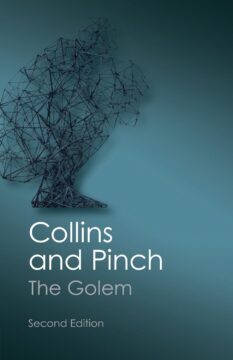
On Tuesday and Wednesday of last week, I taught introductory physics students how to set up circuits. They struggled. They tried to connect capacitors one to the next but, upon hooking up the battery, would find that none had charged. Or, if some capacitors had charged, others would have voltages unaccountably higher than theory would imply. Students would call me over. I would run them through my standard jokes. “Did you have faith? Did you direct your psychic energy toward the circuit?” They would roll their eyes, and I would show them how to fix it. I have taught introductory physics many times, and I know the usual ways that laboratory exercises can fail. Students often find it frustrating when I am able to come to their lab stations and get setups to work that they had concluded were fundamentally broken.
Sociologists of science have long been interested in the tacit knowledge that introductory labs are intended to convey. In the controversial final pages of The Golem: What You Should Know about Science (1993), the British sociologists Harry Collins and Trevor Pinch compare all of science to a messy introductory lab. Each student measures a different temperature of boiling water. But even after that, the teacher is able to convince the students that water boils at exactly 100º C. “That ten minutes renegotiation of what happened is the important thing,” they insist. “If only, now and again, teachers and their classes would pause to reflect on that ten minutes they could learn most of what there is to know about the sociology of science.”
During the past few weeks, I’ve been revisiting The Golem and its two sequels, The Golem at Large: What You Should Know about Technology (1998), and Dr. Golem: How to Think about Medicine (2005), all co-authored by Collins, who today is at Cardiff University in Wales, and Pinch, who died in 2021. These books are entirely composed of case studies, and range from discussions of cold fusion, to macroeconomic predictions, to double-blind medical trials.
Collins and Pinch were early disciples of Thomas Kuhn, whose idea of “incommensurability” I discussed at length in an earlier column. Their first book together, Frames of Meaning: The Social Construction of Extraordinary Science, attempted to apply Kuhnian lessons to scientists studying parapsychology. That topic was self-consciously controversial, but in The Golem they turned to standard science, aiming to show non-specialists how the sausage is made.
The “golem” metaphor, here, stands for science itself—a clumsy and sometimes dangerous creature, animated by the word “truth” in its mouth. Read more »
by Eric Feigenbaum

Two of the most frightening words in America: Medical Debt. And this nightmare is not just something you hear as an anecdote or cautionary tale. One in three of the people reading these words are likely to have medical debt.
In 2022 roughly 100 million Americans – almost one-third of the population – were saddled with healthcare debt. Yet, more than 90 percent of Americans have some form of health insurance – because it’s less frequently a problem of being uninsured, but underinsured that puts people behind the eight ball. Unsurprisingly, when a problem is so impactful and pervasive, at least some members of the media turn their attention to it.

ProPublica journalist Marshall Allen has been researching and writing about medical bills for more than 20 years – following up on readers’ emails and exploring their medical debt stories. From hospitals that gouge to insurance that is unknowingly cancelled because a credit card wasn’t processed correctly, the ways Americans find themselves paying for their most difficult, painful and vulnerable moments are innumerable. And for whatever kindness they may have received when getting treatment, the billers and collections agents who follow can be heartless.
As a result, many developed countries hold America up as the model of what they don’t want in a healthcare system. The thinking is that healthcare is a human right, not a luxury.
The problem in the American system isn’t typically the quality of care – we have some of the best medical facilities in the world along with cutting edge treatments and technology. It’s that the patient can’t typically control the costs. In the midst of needing life-saving medical care, neither patient, patient’s family nor medical providers can or should consider cost.
Only when a car accident or heart attack drives the patient $100,000 into debt, something has gone terribly wrong. Read more »
A surprisingly strong cube I made out of staples after seeing this video.
Yes, I am a nerd!
Enjoying the content on 3QD? Help keep us going by donating now.
by Leanne Ogasawara

1.
In the high desert of Nevada, a little wildflower is seen clinging precariously to barren rock. We learn that this is the only place in the world where you can find Tiehm’s buckwheat. And like all rare and understated things, it can pull at a person’s heart strings. Like buttercups or fiddleheads, to see them is to love them. And not surprising in that desolate place, the bees and spiders depend on them.
Because these flowers only exist in this one spot, they were not discovered until relatively recently— and as bad luck would have it, they sit atop one of the largest lithium deposits in the world.
And so begins The War Below: Lithium, Copper, and the Global Battle to Power Our Lives. Written by former Reuters journalist Ernest Scheyder, this book was a surprising pick to be longlisted for the National Book Award. Neither literary in style, nor employing the novelistic narrative techniques usually favored by award-winning authors, it is written as straight, solid journalism. Interesting that it was even included on the long-list, I thought—and even more surprising was that liberal media has not paid it much attention. The only real reviews I found were in conservative papers like the WSJ and Forbes.
Intrigued I picked up a copy. Read more »
by Marie Snyder
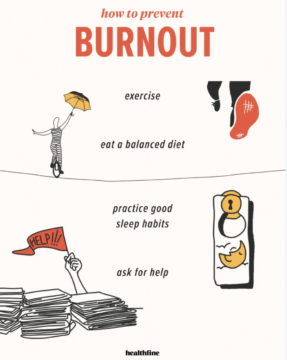 I started reading about burnout when I walked away from teaching earlier than expected. Suddenly, I couldn’t bring myself to open that door after over thirty years of bounding to work. A series of events wiped away any sense of agency, fairness, or shared values. Their wellness lunch-and-learns didn’t help me, and I soon discovered I’m not alone.
I started reading about burnout when I walked away from teaching earlier than expected. Suddenly, I couldn’t bring myself to open that door after over thirty years of bounding to work. A series of events wiped away any sense of agency, fairness, or shared values. Their wellness lunch-and-learns didn’t help me, and I soon discovered I’m not alone.
An article published in JAMA last June looked at rising rates of burnout in healthcare, where 40% of physicians surveyed intended to leave their practice. They suggest, “To prevent a health care worker exodus, experts argue that the emphasis needs to shift from individual resilience to broader system-level improvements.” They are looking for standardized methods to affect organizational management with “evidence-based interventions.”
Over 25 years ago, Michael Leiter and Christina Maslach came to the same conclusion. They identified six areas of worklife affecting burnout and created a specific assessment for educators. They determined the cause to be a “mismatch” between employee expectations and employer behaviours leading workers to be closer to the bleak end of a continuum from burned out to engaged. They suggest that “the task for organizations and individuals is to achieve a resolution.” This is not just a matter of throwing wellness initiatives or resilience-speak into the mix, but addressing any reasonable expectations of employees with appropriate employer interventions in all six interrelating areas.
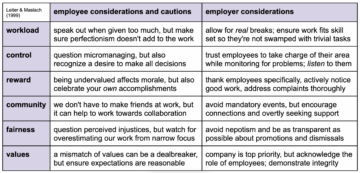
Feels vindicating, right?!
One problem with this solution and possibly a reason why it’s not widespread, however, is that it’s often the employees that hold the highest standards and care for the workplace who are the most affected by burnout, and they might make up a small minority of workers. People who show up to learn the right buzzwords and put in the least effort required to hit their hours without concern for the process and product of the company can feel unscathed, and those employees can make up enough of the workforce to provoke organizations to continue the micromanaging and questionable reward schemes for the many. Read more »
by Mark R. DeLong
Human beings thought with their hands. It was their hands that were the answer of curiosity, that felt and pinched and turned and lifted and hefted. There were animals that had brains of respectable size, but they had no hands and that made all the difference. (Isaac Asimov, Foundation’s Edge)
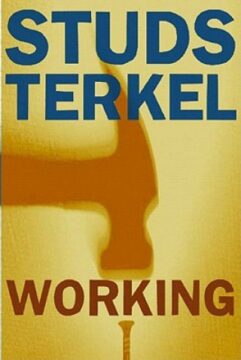 Eugene Russell, a piano tuner interviewed by Studs Terkel in Working, said with satisfaction that the computer wouldn’t be replacing him anytime soon, even though he mentioned electronic devices—“an assist,” he said, that helps tuners. Eugene’s wife Natalie felt otherwise, saying at one point in their conversation, “It’s an electronic thing now. Anyone in the world can tune a piano with it. You can actually have a tin ear like a night club boss.”
Eugene Russell, a piano tuner interviewed by Studs Terkel in Working, said with satisfaction that the computer wouldn’t be replacing him anytime soon, even though he mentioned electronic devices—“an assist,” he said, that helps tuners. Eugene’s wife Natalie felt otherwise, saying at one point in their conversation, “It’s an electronic thing now. Anyone in the world can tune a piano with it. You can actually have a tin ear like a night club boss.”
Eugene mixed elements of beauty and delight with the technical complexity of piano tuning, recalling how he would “hear great big fat augmented chords that you don’t hear in music today” and that he would come home and say, “I just heard a diminished chord today!” Once he was tuning a piano in a hotel ballroom during “a symposium of computer manufacturers. One of these men came up and tapped me on the shoulder. ‘Someday we’re going to get your job.’ I laughed. By the time you isolate an infinite number of harmonics, you’re going to use up a couple billion dollars worth of equipment to get down to the basic fundamental that I work with my ear.”
The piano tuner feels and practices the tune, which is hardly reducible to formulae, perhaps because it is one of those things in life that’s approximated, but not unambiguously achieved. At best, tuning a piano is a compromise: “The nature of equal temperament makes it impossible to really put a piano in tune,” Eugene explained. “The system is out of tune with itself. But it’s so close to in tune that it’s compatible.” Read more »
by Monte Davis

12+16+16 = 44. We can all agree on that.
44/12 = 3 2/3. Good so far?
That’s all the math needed to ask some pointed questions about CCS. That stands for carbon capture and storage (or “sequestration”), a technology discussed and explored at pilot-project scale for decades. Its goal is to separate and collect the carbon dioxide from combustion, before it is released into the atmosphere, then put it in very long term storage so it doesn’t contribute to further climate change. So CCS is really CO2 capture and storage – and the difference between carbon and carbon dioxide is where the arithmetic above comes in.
Carbon’s atomic mass is 12; oxygen’s is 16. (Never mind isotopes.) So combining a carbon atom and two oxygen atoms – combustion — yields a molecular mass for CO2 of 44… or 3 2/3 times that of the “unburnt” carbon atom. These numbers are ratios, so the math is the same for any units: completely burn 12 grams of pure carbon, and get 44 grams of CO2; burn 12 million tons, get 44 million tons of CO2. Fossil fuels aren’t pure carbon, of course, and combustion rarely burns every bit of what there is, so the emission ratio varies. Coal typically yields 2.1 times its mass in CO2; firewood, 1.6 to 1.8 times; gasoline, 2.3 times; natural gas, about 2.8 times.
Pause here, because this is deeply counterintuitive – so deeply that we don’t realize it. We’ve had chemistry for a few centuries, arithmetic for millennia. But we’ve been using fire deliberately for a million or two years, seeing the aftermath of wildfire for much longer. All that experience taught us in our bones that the ashes always weigh less than the fuel did. As for the smoke – why, just look at it! Any hominid can see that it weighs nothing at all!
Because CO2 swirls invisibly away with that smoke, and soon mixes with the air and dissipates, we’ve learned only in the latest eyeblink of time to account for all the combustion products. It takes an effort to grasp that CO2 is as much “ash” as the gray powder in the fireplace – ash that weighs more than the logs we burned. The 15 gallons of gasoline in your car’s tank weigh about 100 pounds. When it’s gone, you’ve made a present to the world of about 230 pounds of carbon dioxide, along with much smaller quantities of carbon monoxide, benzene, 1,3-butadiene, etc. Read more »